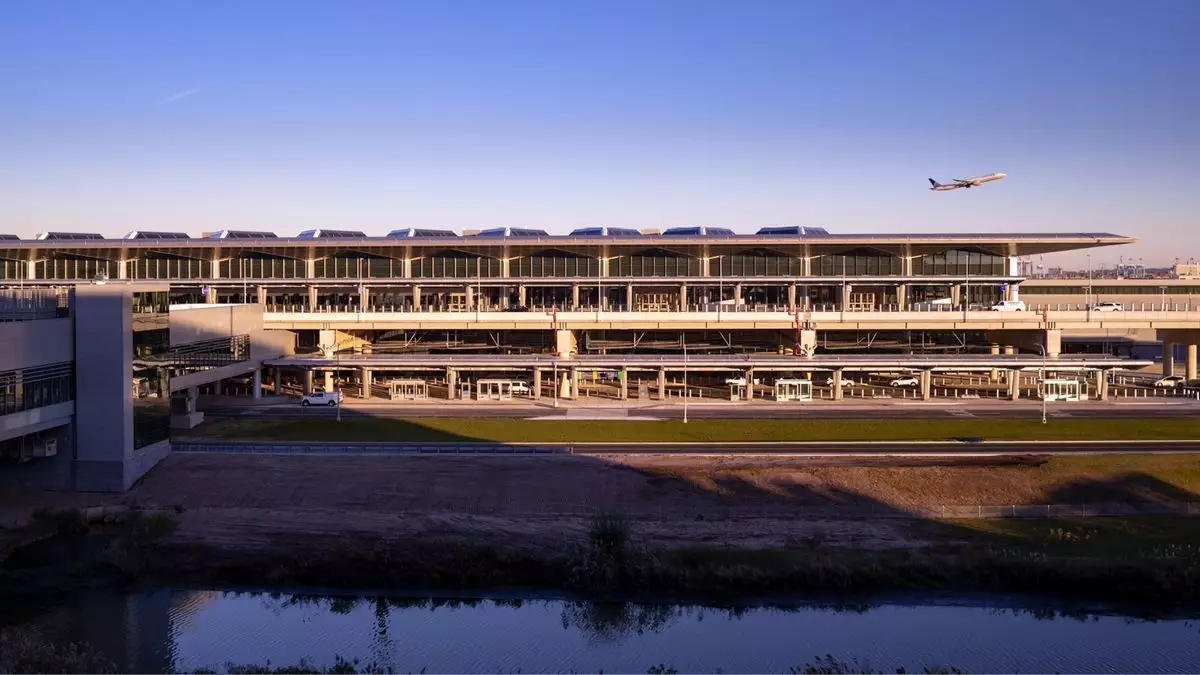In recent months, operational challenges at Newark Airport have highlighted the critical flaws in the air traffic control systems that manage one of America’s busiest airports. The Federal Aviation Administration (FAA) has confirmed that repeated technology outages at the air traffic control facility have forced numerous controllers to take leaves of absence. Such a scenario has far-reaching ramifications—United Airlines has responded by canceling 35 flights daily, while travelers experience severe delays and disruptions. This situation raises a crucial question: how long will we allow outdated technology to govern our skies?
The FAA’s acknowledgment of stress among air traffic controllers is a grim reality of working within an environment plagued by unreliable technology. Controllers, who are essential to maintaining safe and efficient flight operations, are subjected to tremendous pressure when equipment failures lead to extended delays and cancellations. It is essential to understand that air traffic control is not just about managing flight schedules; it embodies the safety of countless passengers.
Chain Reactions of Cancelations and Delays
The repercussions of this technological crisis extend beyond Newark, affecting a myriad of travelers and airline operations. On May 6 alone, Newark experienced an average departure delay of 244 minutes, largely attributed to runway construction and compounded by the aforementioned staffing shortages. Reports indicate that Newark has faced a string of cancellations, including a staggering 79 flights on May 5 and 102 on May 1. As the chaos unfolds, one can only imagine how many livelihoods and plans hang precariously in balance.
The FAA’s strategy of allowing airlines to operate up to 10% fewer flights at Newark is indicative of a desperate attempt to alleviate pressure on an already stressed system. Yet, such stop-gap measures do not address the root cause of the problem: an antiquated air traffic control system struggling to keep pace with the demands of modern aviation. These issues evoke frustration not only among passengers but also showcase the urgent need for effective policy reforms at a national level.
Underlying Causes: A System on the Brink
The primary issues confronting Newark and its operations can be traced back to multiple factors, but the forefront of concern rests with the technological failures at the Philadelphia Terminal Radar Approach Control (TRACON) facility. After a distressing 90 seconds of lost radar and radio communication on April 28, controllers were shaken enough to prompt four to take short-term leave. Such incidents illustrate the reality of an air traffic control system that is underfunded and overextended.
Additionally, a recent report from the U.S. Government Accountability Office (GAO) cites 58 outdated FAA systems that are potentially unsustainable and pose a risk to both safety and efficiency in the national airspace. This doesn’t merely concern Newark but underscores a systemic issue affecting air travel across the United States. The time has come for stakeholders—government bodies, industry leaders, and the public—to unite in demanding a comprehensive modernization of air traffic control systems.
The Call for Action: Investing in the Future
Transportation Secretary Sean Duffy has emerged as a leading advocate for the overhaul of the air traffic control framework. His administration’s proposed budget includes a significant investment of $5 billion towards national airspace system upgrades, along with a $450 million allocation aimed at replacing antiquated radar systems. If there’s one takeaway from the recent troubles at Newark, it’s that investing in state-of-the-art technology is no longer a luxury but a necessity.
The proposed funding by members of Congress, including Rep. Sam Graves‘ recommendation for $15 billion in new air traffic control upgrades, is a step in the right direction. However, the scope of the problem is so massive that it requires robust bipartisan support. Technological advancements are achievable; the question lies in whether the political willpower exists to enact the changes necessary.
In a world where air travel continues to skyrocket, the potential consequences of delaying action on infrastructure improvements could be devastating. The system as it operates today can no longer keep up with the demands placed upon it. If we do not invest in cutting-edge technology and streamline operations, we may witness increasingly frequent failures that compromise both safety and efficiency in air travel. The narrative at Newark is not just a localized crisis; it symbolizes a nationwide call to action for modernizing air traffic management systems.


Napsat komentář